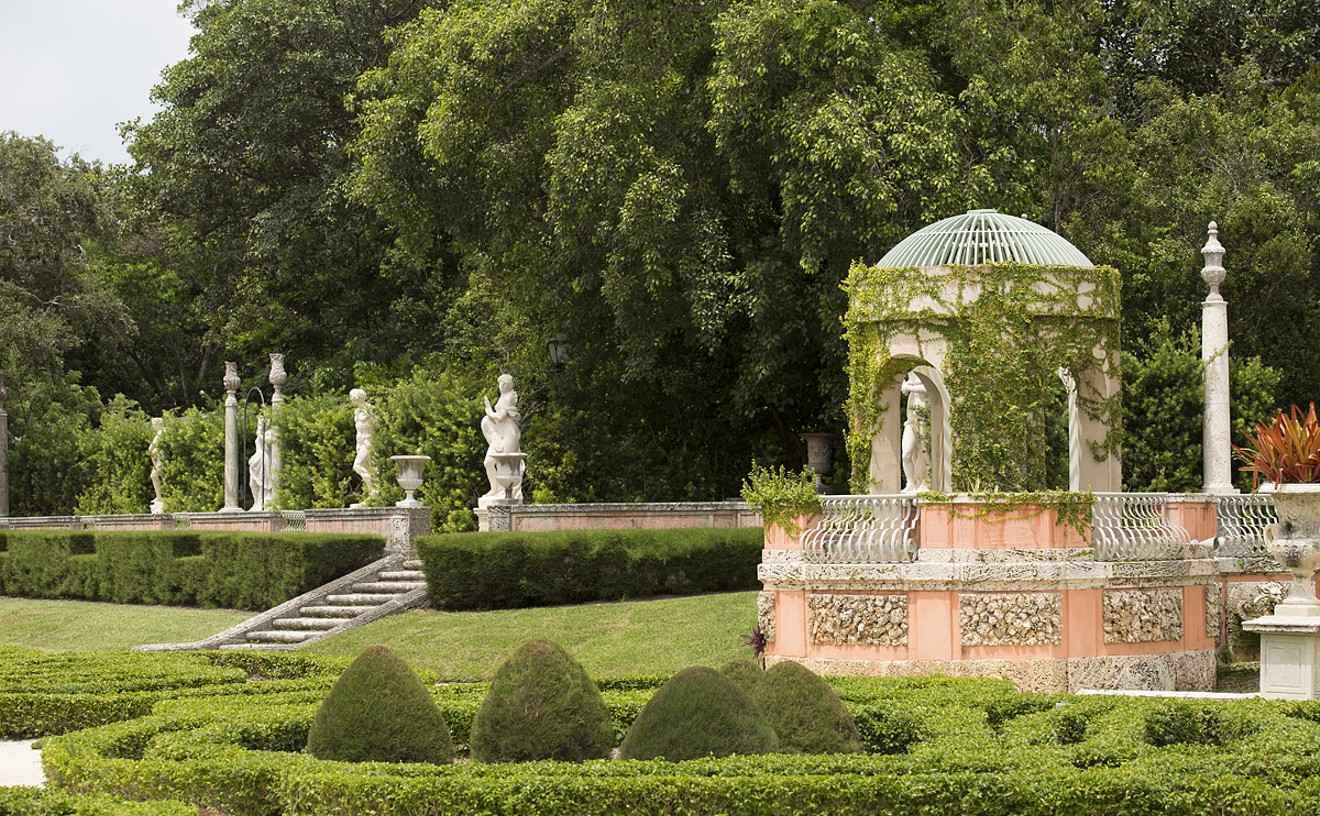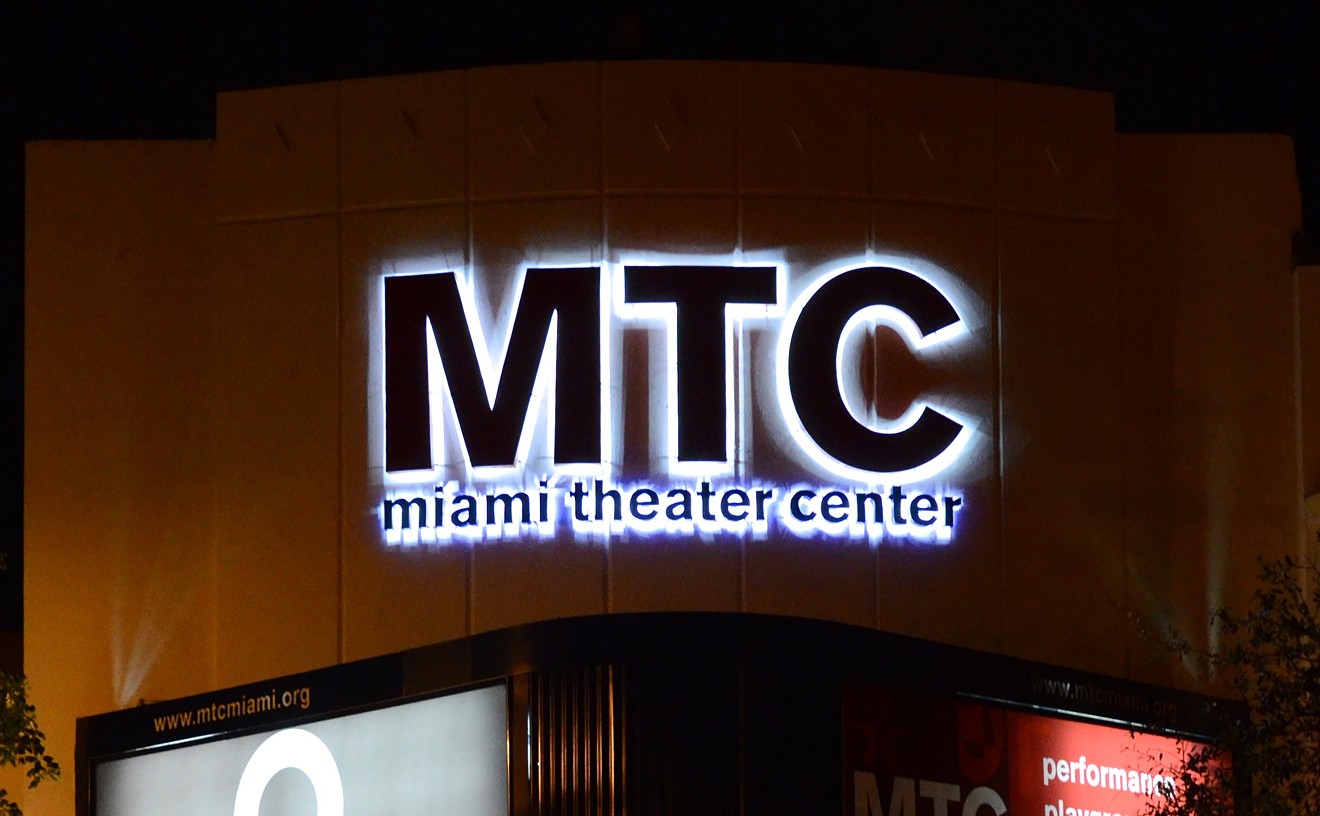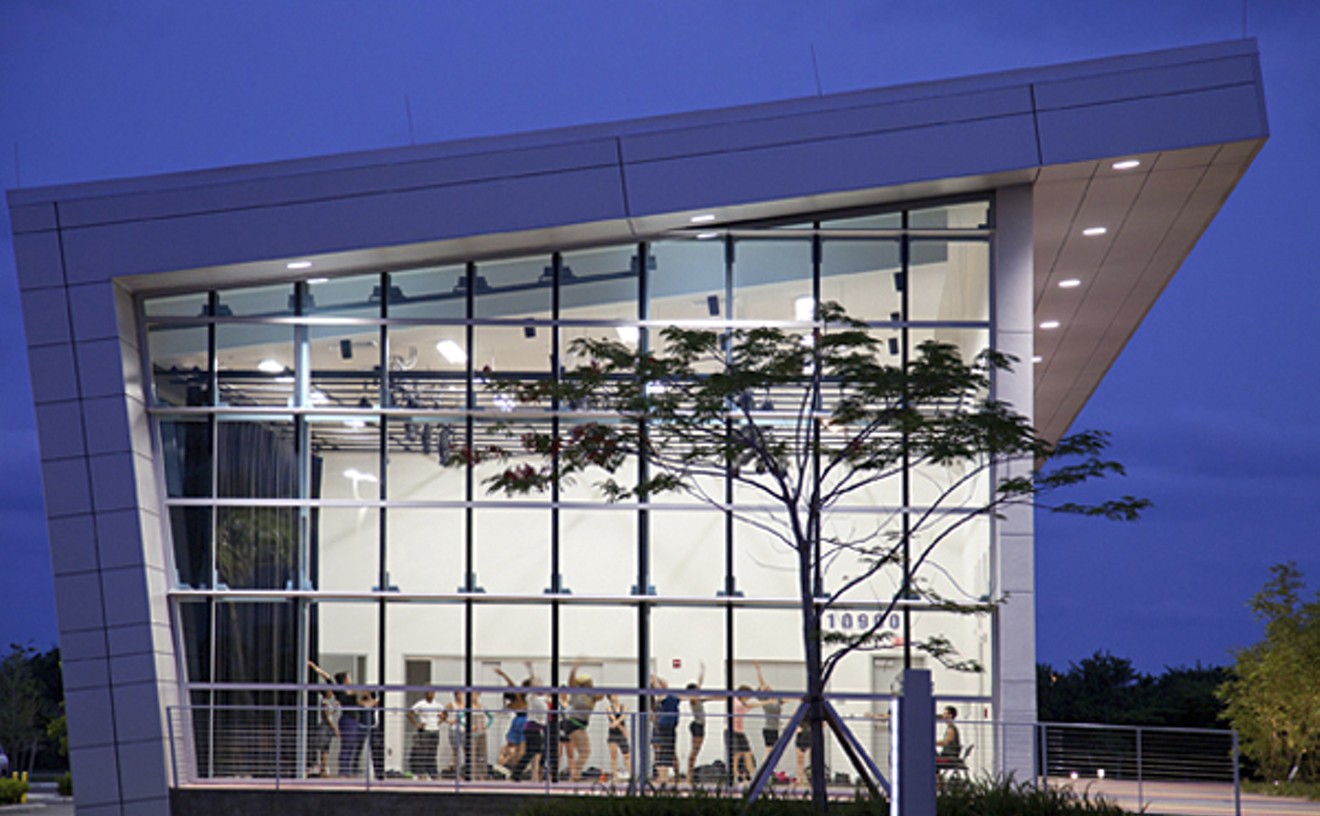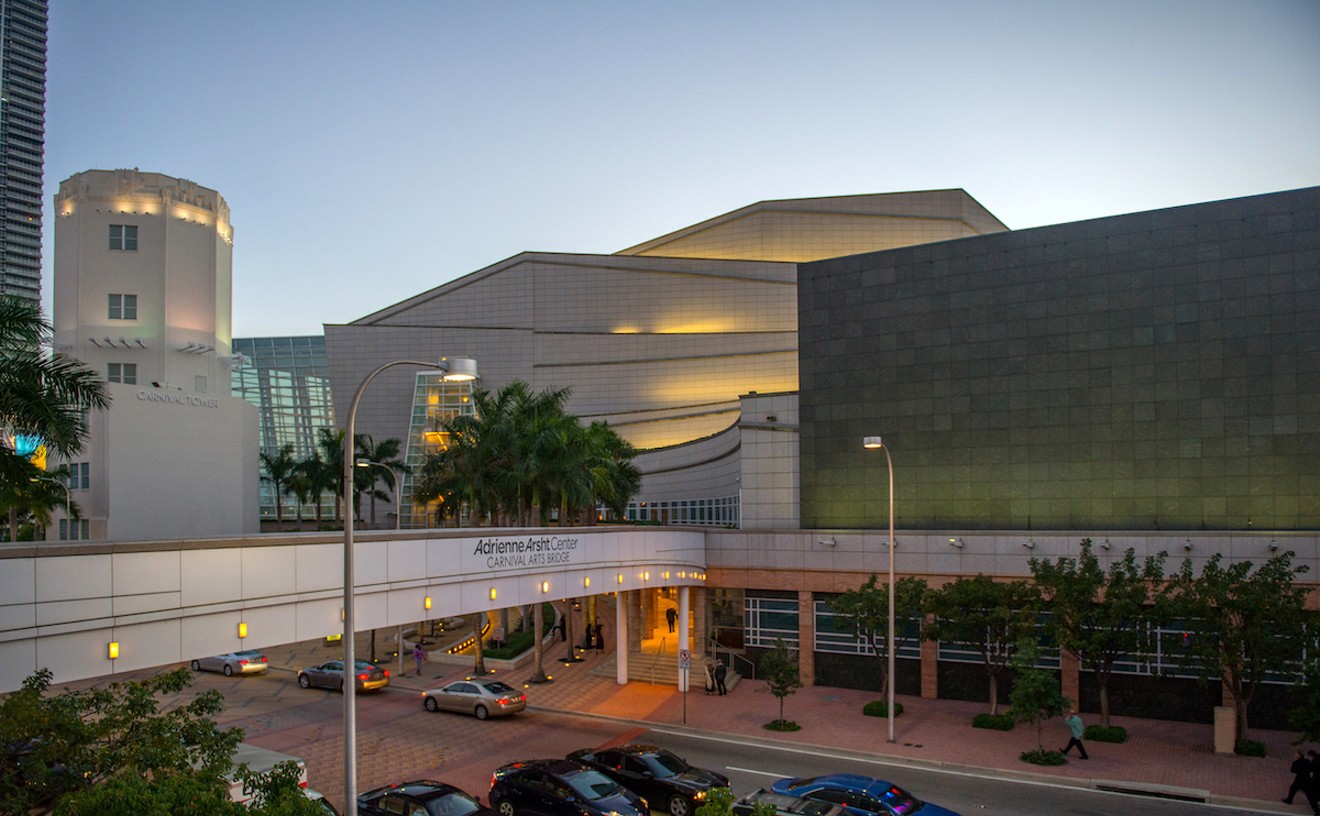Yeah, we know Miami is the only urban metropolis wedged next to two national parks (that's Biscayne and the Everglades, you rube). But that doesn't mean it's easy to find a jewel of urban quietude amid that concrete jungle. That's why Vizcaya is such a miracle in the Magic City. Nested in the heart of Coconut Grove, the estate was built by agricultural magnate James Deering in the years after World War I and modeled on an Italian Renaissance villa. Elaborate gardens spill through mangroves to the edge of Biscayne Bay, while the house itself is a stunning faux-European masterpiece. Yet the place exudes pure Miami charm, from the local limestone and native subtropical foliage to the regular stream of weekend quinceañera photo shoots along the water's edge. Next time your urban fervor spikes, there's no need to flee an hour and a half into the midst of the Glades — simply head to the mystical respite in downtown Miami's backyard.
Best Museum
Vizcaya Museum & Gardens

- 3251 S. Miami Ave., Miami, 33129 Map
- 305-250-9133
- vizcaya.org
Best Ensemble
The Cast of Alliance Theatre Lab's Savage in Limbo

For a perfect ensemble cast, actors' responsibilities are twofold: They each have to create a character that is distinct and three-dimensional, and they have to collaborate to create a fictional world that is, in most cases, as plausible as the one beyond the proscenium. If there's one bit of miscasting, the audience becomes conscious of a "performance" — and then the simulacrum crumbles. This was never the case in the Alliance Theatre Lab's unforgettable Savage in Limbo, in which director Adalberto Acevedo's five actors played together with the harmonic richness of a musical quintet with decades of experience. The setting was a broken-down bar where a handful of broken-down lives converged. These desperate, frantic, rootless barflies included Shira Abergel's 32-year-old virgin, Valentina Izarra's hooker-attired sparkplug, Curtis Belz's romantically scattered lunkhead, and Breeza Zeller's professional drunk, slumped in melancholy perpetuity over the bar. Christian Vandepas' barkeep presided over this carnival of lost souls with weary disillusionment while clinging onto a thread of hope that quietly unfurled. Collectively, these actors formed the emotional nucleus of a place in which no one ever wants to wind up, but it must have struck many viewers as painfully familiar.
- 6766 Main St., Miami Lakes, 33014 Map
- 305-259-0418
- www.thealliancetheatrelab.com
Best Supporting Actress
Erin Joy Schmidt

A year ago, Erin Joy Schmidt took home New Times' honors for Best Actress thanks to her searing, tear-stained portrayal of an author learning a life-altering secret in Actors' Playhouse's Other Desert Cities. This year, she's won Best Supporting Actress thanks to her latest tear-jerking part — only this time the waterworks are the audience's alone, and they're born of comedy, not tragedy. Schmidt's presence contributed to the finest live-theater entries of Mad Cat Theatre Company's Mixtape 2: Ummagumma Forza Zuma!, "a typically eccentric compilation of playlets, poems, short films, and music videos at Miami Theater Center. It was a showcase for her range, which encompassed everything from a confused focus group participant who acquiesces to the demands of a convincing controller (in Blind?) to one of four siblings grieving for their dying mother in the precise and cerebrally moving Unearthed. But her piece de resistance was in Theo Reyna's The Scottish Play, a geopolitical satire in which her character stood in for the country of Scotland. Employing a deliberately overwrought, scarily committed Scottish accent that bordered on parody without ever succumbing to it, her work in The Scottish Play was funnier than anything she's ever done. And like a true pro, she played every ridiculous line as if her life and, of course, her national sovereignty depended upon it.
- 9806 NE Second Ave., Miami Shores, 33138 Map
- 305-751-9550
- mtcmiami.org
Best Actress
Karen Stephens
There is no such thing as a "typical" Karen Stephens part. Like the best actors anywhere, she's an invisible conduit for a playwright's unique creation, which, paradoxically, we cannot imagine existing without her. Thus, if Christopher Demos-Brown's world-premiere play Fear Up Harsh, which debuted in Miami courtesy of Zoetic Stage, receives productions elsewhere, Stephens' masterly lead performance sets a seemingly untouchable benchmark. Her lesbian army corporal — physically and emotionally bruised, desperate, and probably alcoholic — is as convincing a portrayal of a military veteran as we've seen onstage, with Stephens infusing her character's tortured memories and wry wit with lived-in intelligence. A few months later, she flawlessly inhabited another complex character — a brash, funny, Southern-bred maid with a heavenly secret — in GableStage's The Mountaintop. That secret torpedoed an otherwise provocative piece, but Stephens remained truthful even during its descent, culminating in a powerful soliloquy encompassing the past 40 years of African-American history that ebbed and flowed with the oratorical gusto of The Mountaintop's immortal subject, Martin Luther King Jr.
- 1200 Anastasia Ave., Coral Gables, 33134 Map
- 305-446-1116
- www.gablestage.org
Best Theater for Drama
South Miami-Dade Cultural Arts Center

Once viewed as a construction-delayed, $51 million albatross, the South Miami-Dade Cultural Arts Center (SMDCAC) has already done plenty since it's 2011 grand opening to prove its worth to taxpayers. It has delivered a winning combination of jazz, classical, and dance shows with a heavy emphasis on Latin American and Caribbean troupes. But no one could have predicted that one of its greatest contributions to Miami's arts scenes would be providing an itinerant theater a permanent home. That's just what happened, though, after the rightly acclaimed New Theatre lost its longtime space in Coral Gables and then bounced around a few other locations before landing at SMDCAC. Their combination has been the Jay Z/Beyoncé hookup of the South Florida arts world — a powerhouse arts marriage made in heaven. New Theatre's premiere in-house production, Visiting Hours, told the story of an older lesbian couple and their estranged son, who barges back into their lives following charges of aggravated assault. Written by frequent New Theatre collaborator and Miami native David Caudle, the work gave the company a refreshing and memorable new start. Weaving innovative pieces from New Theatre into a season filled with crowd-pleasing events — the Miami Symphony Orchestra, jazz singer René Marie, and flamenco star Jesse Cook, to name a few — has solidified the South Miami-Dade Cultural Arts Center as an exciting and worthy enhancement to Miami's theatrical stage.
- 10950 SW 211th St., Cutler Bay, 33189 Map
- 786-573-5300
- mosscenter.org
Best Musical
Elf

The touring production of Elf didn't make its way to Miami until December 31 — after many Christmas enthusiasts had already pulled the lights off their palm trees and bundled away the inflatable lawn snow globes for another year. But that doesn't mean the Christmas spirit didn't live strong at the Adrienne Arsht Center for the Performing Arts. In fact, when it comes to eternal holiday cheer, Elf probably gave the year-round local favorite Christmas Palace a run for its money. The production, based on the instant classic starring Will Ferrell and Zooey Deschanel, brings the film to even grander and sillier heights by not only keeping all the fan favorite lines and scenes but also adding infectious songs, even more heart, and so much holiday fun that Santa might OD on cheer. Even better, Elf delivered snow to Miami, dusting the stage with the kind of white stuff that's all too rare in the 305. By the musical's end, you'd be hard-pressed not to agree with Buddy the Elf when he proclaims, "Smiling's my favorite!"
- 1300 Biscayne Blvd., Miami, 33132 Map
- 305-949-6722
- arshtcenter.org
Best Actor
Nicholas Richberg

It's worth remembering that before John Wilkes Booth became the first successful presidential assassin, he was a Shakespearean actor, and apparently a damn good one. Early reviews of his plays referred to his "natural genius" and his status as "the most promising young actor on the American stage." So it takes an equally brilliant actor to bring this fascinating monster to life, to convey both his misguided sense of vengeance and his imposing theatricality — his demons and his dramaturgy alike. In this regard, Nicholas Richberg exceeded all expectations in his embodiment of Booth, one of a number of presidential killers explored in Stephen Sondheim's offbeat musical Assassins, from Zoetic Stage. Resembling the real Booth with frightening attention to detail in hair, makeup, and costuming, Richberg anchored a show that is, by its nature, all over the place — providing, in the character of this talented racist, its panache and its fire and even its soul. Barbara Bradshaw, a former New Times Best Actress winner, recently told a reporter that even if she were playing the biggest villain in a show, she needed to play her with the knowledge that she didn't know she was a villain. This was certainly the case with Richberg's Booth, who achieved the unlikely feat of making us genuinely care about the man who murdered our greatest president.
- 1300 Biscayne Blvd., Miami, 33132 Map
- 305-949-6722
- arshtcenter.org
Best Supporting Actor
Ethan Henry

Most critics agreed that Metamorphoses — the Adrienne Arsht Center and University of Miami Theater Department's ambitious adaptation of Mary Zimmerman's version of Ovid's Roman myths — was not a great success. But the effect of its uneven pacing and wildly disparate cast of students and professionals ensured that one performance stood out all the more glaringly from the rest, for all the right reasons. Ethan Henry almost single-handedly brought the cerebral script and ancient source material to vivid life, inhabiting its most difficult and iconic characters. His interpretation of Midas as an arrogant one-percenter who learns humility the hard way was powerful enough, but nothing could prepare audiences for his role in the Cinyras myth, in which his lecherous character engaged in a blindfolded sexual tryst with a nubile girl who turned out to be his daughter. The incestuous liaison took place in a pool, with Henry and Alanna Saunders swirling and tumbling on the water's surface in shameful ecstasy. The moment when the blindfold came off, and Henry's carnal bliss metamorphosed into the agony of irredeemable despair, was as masterful a transition from one extreme to another as any that graced a stage in recent memory. Let's hope the UM students populating at least half of this production were taking copious mental notes.
- 1300 Biscayne Blvd., Miami, 33132 Map
- 305-949-6722
- arshtcenter.org
Best Director
Tarell Alvin McCraney

A lot of theater companies and movie producers do the whole "Shakespeare as you've never seen him before" thing, which usually involves staging the Bard's words inside a McDonald's, on the front lines of a Middle Eastern war, or in outer space. But Miami native Tarell Alvin McCraney's eccentric and visionary adaptation of Antony and Cleopatra never relied on such gimmicks. It employed the abstract sets and spartan style of his previous work at GableStage (like The Brothers Size and his ratatat Hamlet) to somehow evoke both 18th-century Haiti and ancient Rome/Alexandria, creating a cross-cultural hybrid that respected the original source material while enriching it with subtextual meaning. The props and live, balcony-perched band created Afro-Caribbean ambiance that drifted in and out of Shakespeare's fraught and complicated text, uttered by its spectacular cast with the mix of frothing passion and enviable, roll-off-the-tongue nonchalance that any modern Shakespeare interpretation could hope for. Yes, not every actor enunciated clearly enough for every line to be heard within the Colony Theatre's imperfect acoustics, but be honest: Unless you're a Shakespeare scholar, you wouldn't be able to decipher it all anyway. The grandiosity and chutzpah of this cinematic vision more than made up for any minutiae that might have slipped through the cracks.
- 1040 Lincoln Rd., Miami Beach, 33139 Map
- 305-674-1040
- miaminewdrama.org/about/the-colony-theatre/
Best Set Design
Assassins

Michael McKeever's set for Zoetic Stage's Assassins must have been a fun place to show up to work for its cast of ten. After all, it's not often you get to spend a couple of hours a night playing around and firing blanks into a multitiered carnival booth, not to mention exhaling your last breath while collapsing onto a flawless replica of the official presidential seal of the United States. With its mix of jingoistic colors and iconography and its peeling wooden marquee reading "Take Your Shot," McKeever's set resembled both Coney Island parlor games and White House pomp and circumstance — finding a visual representation of the nexus of the assassins' low-rent delusions and their unseen victims' patriotic grandeur. It was also a fount of hidden pleasures, from the centrally positioned, rotating presidential portrait to the red-and-blue police sirens tucked away in crates to the noose atop the stairway, which helped create one of the show's funniest visual gags. This might sound like a dubious honor for McKeever, but the fact is, if anyone had the choice to die on any set, it would be this one.
- 1300 Biscayne Blvd., Miami, 33132 Map
- 305-949-6722
- arshtcenter.org





